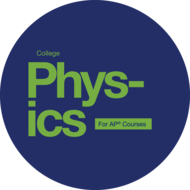What Is Newton's First Law?
(View Complete Item Description)Students are introduced to the concepts of force, inertia and Newton's first law of motion: objects at rest stay at rest and objects in motion stay in motion unless acted upon by an unbalanced force. Examples of contact and non-contact types of forces are provided, specifically applied, spring, drag, frictional forces, and magnetic, electric, gravitational forces. Students learn the difference between speed, velocity and acceleration, and come to see that the change in motion (or acceleration) of an object is caused by unbalanced forces. They also learn that engineers consider and take advantage of these forces and laws of motion in their designs. Through a PowerPoint® presentation and some simple teacher demonstrations these fundamental science concepts are explained and illustrated. This lesson is the first in a series of three lessons that are intended to be taught as a unit.
Material Type: Lesson Plan




















